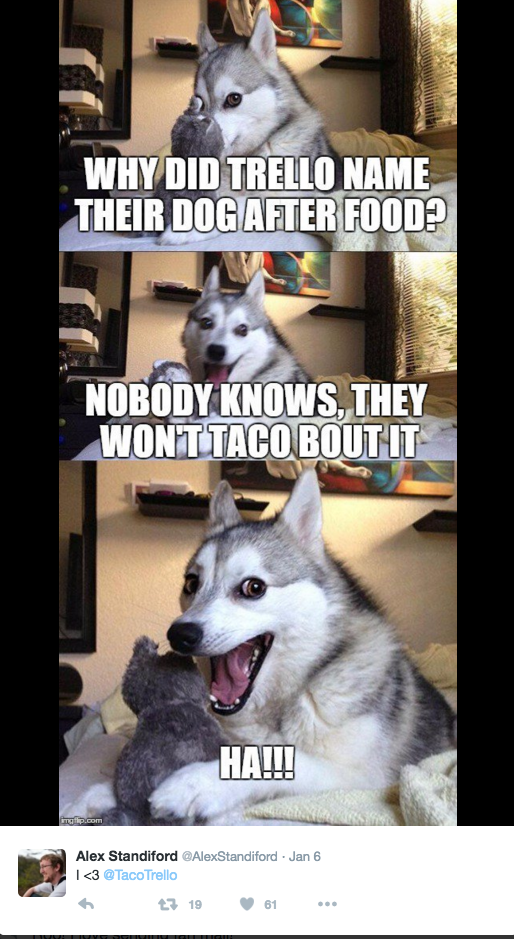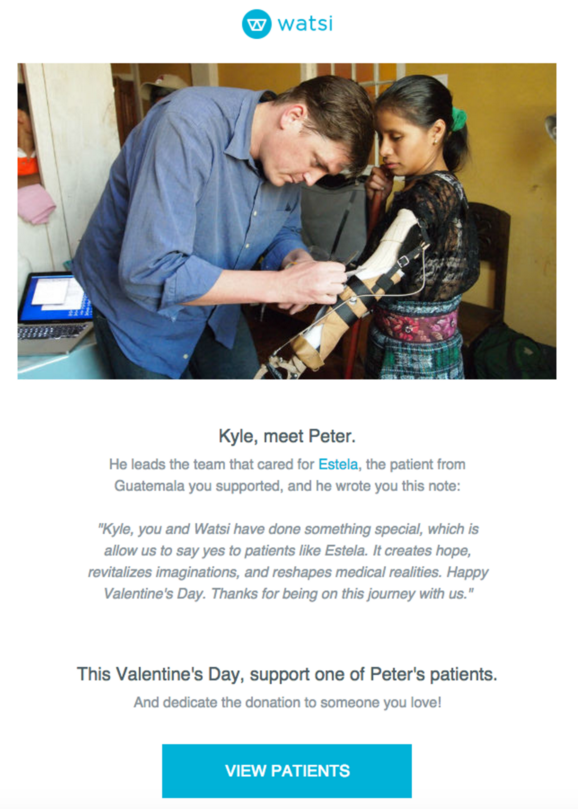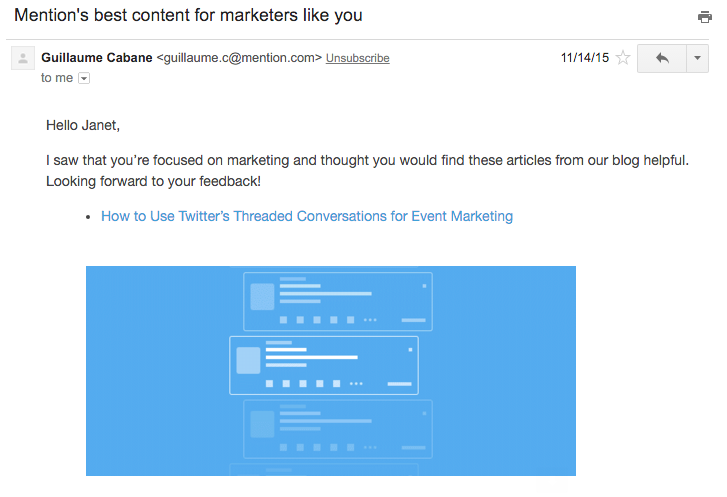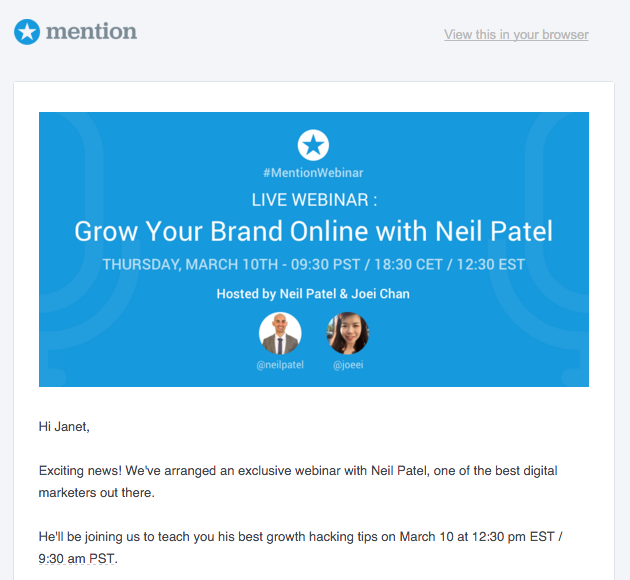
How to Leverage the Familiarity Principle in Emails
Which do you prefer, Coke or Pepsi?
In blind taste tests, consumers regularly cast their vote for Pepsi. But here’s the catch: as soon as consumers knew they were drinking Coke, they preferred it more. When scientists studied why people picked Coke over Pepsi — even though they liked the taste of Pepsi better! — they found that people had stronger mental and emotional associations with Coke’s brand.
Marketers leverage this type of finding with an all-too-simplistic formula: the more touchpoints a consumer has with a brand, the more they’ll like it. In fact, there’s a psychological phenomenon called the familiarity principle, which states that the more you see something, the more you prefer it. But the number of touchpoints simply doesn’t cut it. It’s not like Pepsi doesn’t advertise. In fact, they spend copiously, often advocating that they have a superior taste.
Yet it’s clear that Coke has the superior branding. Whatever they’re doing is able to outweigh Pepsi’s touchpoints because theirs matter more. The real magic of the familiarity principle is creating interactions that cut through the noise to actually stick with people, boost mindshare, and build trust.
Here’s how you can use it in email marketing and communicating with your customers:
Dude, Where’s My Czar?
The clothing company Burberry was having an identity crisis. The 150-plus-year-old company was underperforming and seemed stodgy, all while trying to appeal to too many people. Burberry’s genius solution: implement a “brand czar.”
The brand czar’s sole job was to regulate every consumer-facing part of the business. Everything from their product offerings, their brick-and-mortar stores to their online ordering system to their customer support scripts to their emails had to feel consistent. With the brand czar, consumers would walk away from every interaction, knowing that they dealt with Burberry, a luxury brand.
It worked. The company transformed its brand, spurred growth, and affirmed its place in the luxury sector.
This takes advantage of one of the most crucial elements of the familiarity principle: consistency. Sociologist Robert Zajonc, the first person to study the familiarity principle in a lab setting, discovered that the principle only works if few variables are changed between touchpoints. Humans like consistency.
For users to connect with a consistent brand, there should be an identity that comes through each experience — and that includes how you talk to people in your emails. Second, there can’t be a “too many cooks” problem. The experience should feel continuous, from your email headings to the copy and tone of your messages.
Introducing: Taco from Trello
Trello users sometimes get an email from an interesting address: taco@trello.com. Taco the Husky is Trello’s mascot, a literal embodiment of a brand czar. As the mascot for Trello, the dog “sends” emails too, including feature updates, news, and a helpful “how to get started” message.

In addition, Taco has a Twitter account. It’s goofy, but it shows the brand’s personality and gets people to want to engage, instead of shoving touchpoints in their faces.

A presence like Taco’s helps make the brand feel consistent over time, which is what the familiarity principle is really about. It’s not necessarily about having an actual person to latch onto but an identifiable presence that users can get to know and even engage with.
To build a consistent presence with your emails, first, consider the elements that can become familiar to someone in their inbox — like design, tone, and having designated, identifiable senders. People feel safer opening an email from a friendly name, (like Janet from Customer.io) rather than a do-not-reply address. And as Kristen Craft, Wistia‘s director of business development, puts it, showing character is a great way of getting touchpoints that matter.
Over time, the more people see this identifiable, positive presence, the more that identity will stick. You’re increasing trust and recipients’ inclination to open and pay attention to you, message-by-message.
Tell Stories to Engage Emotions
Political canvassers have a tough job. For every unsubscribe we might get, they get a literal door closing in their face. But recently, a team of researchers examined how going door-to-door can actually change people’s minds, even on really hot-button issues. The most effective canvassers don’t throw facts at people or present a laundry list of reasons to vote for this candidate or against a certain policy. The most effective canvassers tell stories.
Specifically, they tell stories that really get the listener to empathize, and allow the listener to imagine what it would be like to be in that situation. As one study found, perspective-taking, or “imagining the world from another’s vantage point,” is a cognitive-active process that can have huge effects, from changing someone’s mind to even reducing prejudice.
Branding these days can seem like it’s all about being catchy and viral, but it’s quality touchpoints like stories that connect with and involve people that stick around.
How Watsi Tells Stories that Matter
Watsi enables people to directly fund patients in need across the globe. The nonprofit saw the great impact of telling their patients’ individual stories, including updates on their treatment and beautiful photography, via email.
For Watsi, this “user experience” has become an important part of their brand. It feels much different when you make a donation through Watsi than another organization. I love getting updates about patients whose treatment that I’ve helped fund.

Instead of getting a receipt for my donation as if it were any other type of cold purchase, Watsi allows me to become more involved in the narrative, which accomplishes many things. I get to feel like a caring, informed person, which makes me think of Watsi in a positive light. I feel more engaged with their work, which makes me want to continue to engage with them and continue donating. And it aligns with the company’s main value of radical transparency, which creates a consistent experience.
Here’s one of Wati’s best-performing email campaigns. The message is personalized based on a patient previously funded and brings in the perspective of the patient’s doctor, recalling the familiar and weaving a continuing narrative journey of support, care, and hope.

“We realized the closer we can bring people to the work we’re doing on the ground — to the patient, to the hospital providing the care, to the person’s family — the more they will feel like they are having a signficant interaction, and that’s the product we deliver for every donation,” co-founder Grace Garey told First Round.
What Good Can You Do?
One big common mistake is abandoning your audience and customers too early, before making a lasting positive impression, or even before they even know who you are (which is why sending the odd blast email to everyone at once can seem so terrifying). That requires more than just showing up to push a holiday promotion to drive sales or random news blast to drive traffic. For marketers, this means investing in interactions that are more than strictly transactional.
Another huge mistake is that you grab the wrong takeaway from the familiarity principle — to win, talk more. That’s the fast track to acting like an annoying spammer, barraging your recipients with empty, impersonal messages.
So your job isn’t done after one more signup or subscription — nor is it done by adding yet one more piece of noise to mix. Your job’s done when your brand comes off more like Coke than Pepsi. And when it comes to email marketing, one way to do that is by doing some good.
First Rule of Email: Add Value
We talk a lot here about the value of great product-driven behavioral emails — they give direction to people who get stuck and help users make progress towards their goals in your product.
So today, let’s examine another way of adding value via email: provide helpful content that helps people do their job or accomplish their goals outside of your product or service.
This type of engagement improves your relationship to people at any stage of the buyer’s journey or customer lifecycle. Instead of a sales-y exhortation to “buy something now!”, it’s an offering. Not only do you start — and continue — conversations with folks you want to engage, you build trust and connection to your brand, all without focusing on yourself.
Wistia does a great job of this by providing tons of educational content — whether you’re a free user, newsletter or community subscriber, or a power team mega player. Everyone needs a hand when it comes to being successful with video. This isn’t a new tactic of course, but what makes Wistia stand out is their quality and personality. Because they deliver this value, over and beyond their video-hosting product, consistently and with such character, they stand on the Coca Cola side of the branding spectrum.

The company, Mention, collects job information at signup, which enables them to send content customized to those roles, from blog posts:

click to see full email
to relevant webinars:

By continuing to engage users even after signup — and personalizing content to make sure it’s relevant and useful — Mention is building a familiarity that matters.
The Crazy Thing About How You Communicate
The familiarity principle seems like a bunch of common sense. Repeat positive interactions — get happier audiences and customers — and ultimately, happier business results.
But there’s still one profound lesson we haven’t talked about yet: the fact that how you communicate with people changes their experiences and perceptions of your product. Positive contextual associations that you create have an ability — on a neurological level — to affect someone’s enjoyment of your offering, over someone else’s.
The potential for your customer communication and email marketing to make that difference is enormous. Data allows you to get even more personalized and relevant to your customers. Combine that data with a consistent voice and branding, great storytelling that brings people closer, plus valuable, helpful content — and you’ll supercharge your marketing.
What’s another company that you think does a great job of branding and customer communication?
